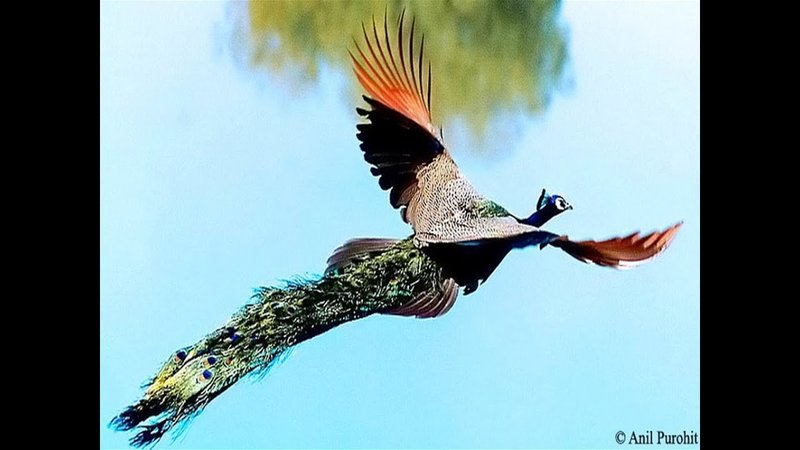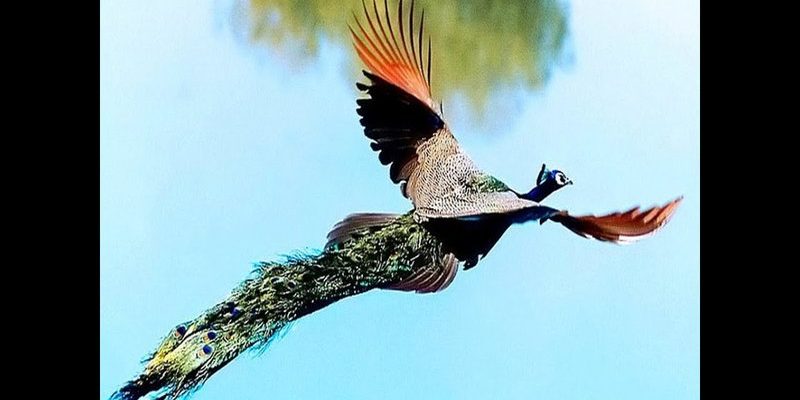
To put it simply, peacocks are more than just eye-catching birds; they have unique adaptations that set them apart from other species. Their flying and hunting techniques are not just for show; they serve vital roles in their daily lives. Let me take you through the intriguing world of peacocks and how they navigate their environment with grace and skill.
The Anatomy of a Peacock: What Makes Them Unique?
Before diving into their flying and hunting techniques, it’s essential to understand the peacock’s anatomy that facilitates these behaviors. Peacocks belong to the pheasant family, and their bodies are designed for both display and survival. They have long, powerful wings, which, despite their large size, allow them to take flight when needed.
The feathers on their tails, or “train,” aren’t just for showing off during courtship displays; they also play a role in their flying abilities. These feathers can create drag, impacting flight efficiency. Interestingly, while peacocks can fly, they typically do so in short bursts, often to escape predators or reach their roosts safely in trees. You might be surprised to know that they can fly to heights of about 6-8 feet!
Another fascinating aspect of peacock anatomy is their feet. Unlike many birds that rely heavily on talons for grabbing prey, peacocks have sturdy feet that suit their foraging lifestyle. These adaptations make them dexterous on the ground, allowing them to hunt efficiently in their natural habitat.
The Art of Flying: How Peacocks Take to the Skies
Flying isn’t the primary mode of transportation for peacocks, but it’s crucial for their survival. When they need to escape a predator, they can spread their wings and take off surprisingly gracefully. However, since their body is heavier due to their majestic plumage, they rely on strong bursts of energy for short flights.
Peacocks often launch themselves into the air with a vigorous flap of their wings. Think of it like a sprinter taking off from the starting line—quick, powerful, and focused. When they do take flight, it’s usually to get to a high roost or to evade danger.
Interestingly, peacocks are more active during the day, which gives them ample opportunities to fly and explore their surroundings. Their vision is particularly sharp, allowing them to spot predators from a distance. This heightened awareness contributes significantly to their successful flying endeavors.
Why Flight Matters to Peacocks
So, why does flight matter so much to peacocks? Well, it’s not just about escaping danger. Flight also allows them to find mates and establish their territory. The ability to soar above the ground and survey the landscape gives them an advantage. They can spot potential food sources, other peacocks, and even threats lurking in the underbrush.
Another intriguing aspect is how their flying helps them communicate. During courtship, male peacocks perform elaborate displays, and flying can be part of that show. By taking to the air, they can showcase their spectacular plumage more effectively, attracting potential partners.
Peacocks as Hunters: A Look at Their Foraging Techniques
When it comes to hunting, peacocks are primarily omnivores, which means they eat a range of foods, including insects, fruits, seeds, and small animals. Their foraging techniques are both fascinating and efficient.
Picture this: a peacock strolling through the grass, its vibrant feathers trailing behind. As it moves, it uses its keen eyesight to scan for potential meals. They often forage in groups, which is quite smart—more eyes mean a better chance of spotting food and danger alike.
Their hunting is characterized by a combination of patience and strategy. They might stand still for a moment, waiting for movement in the grass, then suddenly pounce. This technique is a bit like playing a game of hide and seek; they blend into their surroundings while keeping an eye out for a tasty snack.
Adaptations for Effective Hunting
Peacocks have several adaptations that make them effective hunters. Their long necks allow them to reach food hidden among foliage and high branches, while their strong legs provide the speed required to chase down insects.
Interestingly, they are also known to eat small reptiles and small mammals when the opportunity arises. This dietary flexibility illustrates their adaptability in various environments. You could say their hunting techniques mirror their flying skills—both require a combination of stealth, agility, and awareness.
Social Behaviors and Their Impact on Hunting
Peacocks are highly social creatures, often found in small groups or flocks. This social structure can greatly influence their hunting success. For instance, when a group forages together, they can cover more ground and increase their chances of finding food.
Moreover, social interactions within the flock serve a broader purpose. By foraging together, they maintain a watchful eye for threats. If one peacock spots a danger, it can alert the others with a distinctive call. This collaborative behavior not only enhances their safety but also makes their hunting forays more fruitful.
Their social dynamics play a part in how they display their beauty as well. During the mating season, males will often showcase their feathers in flamboyant displays to attract females. This competition can lead to higher stress levels, but it also motivates males to hone their flying and hunting skills.
The world of peacocks is a captivating blend of beauty and survival tactics. From their unique flying techniques to clever hunting strategies, these birds demonstrate how elegance intertwines with necessity. Understanding their behaviors and adaptations not only gives us insight into the life of these stunning creatures but also highlights the complexity of nature itself.
In essence, peacocks are more than just their spectacular feathers; they embody a rich tapestry of skills essential for thriving in their environments. The next time you spot a peacock, take a moment to appreciate the intricate dance of flying, hunting, and socializing that defines their existence. Nature truly is a masterpiece, and the peacock is one of its finest brushstrokes.

